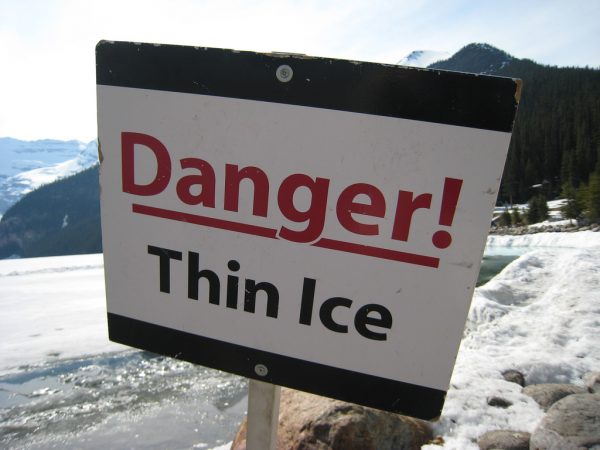Outdoorsmen are an ambitious bunch. They spend tons of money on gear most people would not know what to do with, familiarizing themselves with concepts most can’t even pronounce (bivouac, anyone?) and they take risks that would send some folks running.
During winter, one potential risk involves navigating icy patches of water. As some unfortunate deer found out in New Brunswick, misjudge the thickness or take one wrong step and you might be chest-deep in frigid water. The key to surviving a fall through thin ice is remaining calm and following these five steps.
RELATED: What to Do If You Fall Through Ice
Avoid the Thin Stuff
This may seem obvious, but avoiding the dangerous ice is the first step to staying dry. This means staying away from beaver dams and runs, otter holes, seeps, springs, running water, pressure cracks, aerators and other areas that may cause thin ice. Some will swear by the safety of ice that’s at least three or four inches thick, but I wouldn’t advise stepping out onto anything less than five.
Gear Up
I know that when you’re backpacking, every square-inch matters, but if you’re heading into icy areas, it’s wise to make some room for the gear that can save your life. I suggest carrying a rope at least 50 feet long, so you or someone else can be pulled out of the water should you fall in. You should also keep ice picks on hand, as these can make a huge difference in pulling yourself free.
Share Your Plans
Every time you head to the back-country — especially if you’re planning to navigate icy areas — be sure to tell someone where you’ll be and when you plan to return. That way if you don’t come home, someone can go out and look for you or notify emergency services. Heck, if you can, I would highly suggest hiking with a friend this time of year, so you have a buddy to help you out if anything happens.
Keep Calm if You Break the Ice
If you fall in, don’t panic. The sudden cold will instantly suck your breath away and thrashing around in a panic will make this worse. When you’re calm, you’ll need to flare your arms out to the side to keep them above the ice. Do not try to push yourself up with your arms on the edge of the ice. This places all your weight on your hands and will only break the ice even more.
Now Get Yourself Out
If you can, try to get as much of your body as possible out of the water and onto the ice. If you have those ice picks (you should), put them in your hands, lean forward and kick your feet. Get your body as horizontal as you can and just keep kicking. If you don’t have picks, you can put your hands as far forward as possible and push backward with your elbows as you kick. Keep kicking until your hips are out and then roll away from where you fell in.
Photo credit: Flickr








